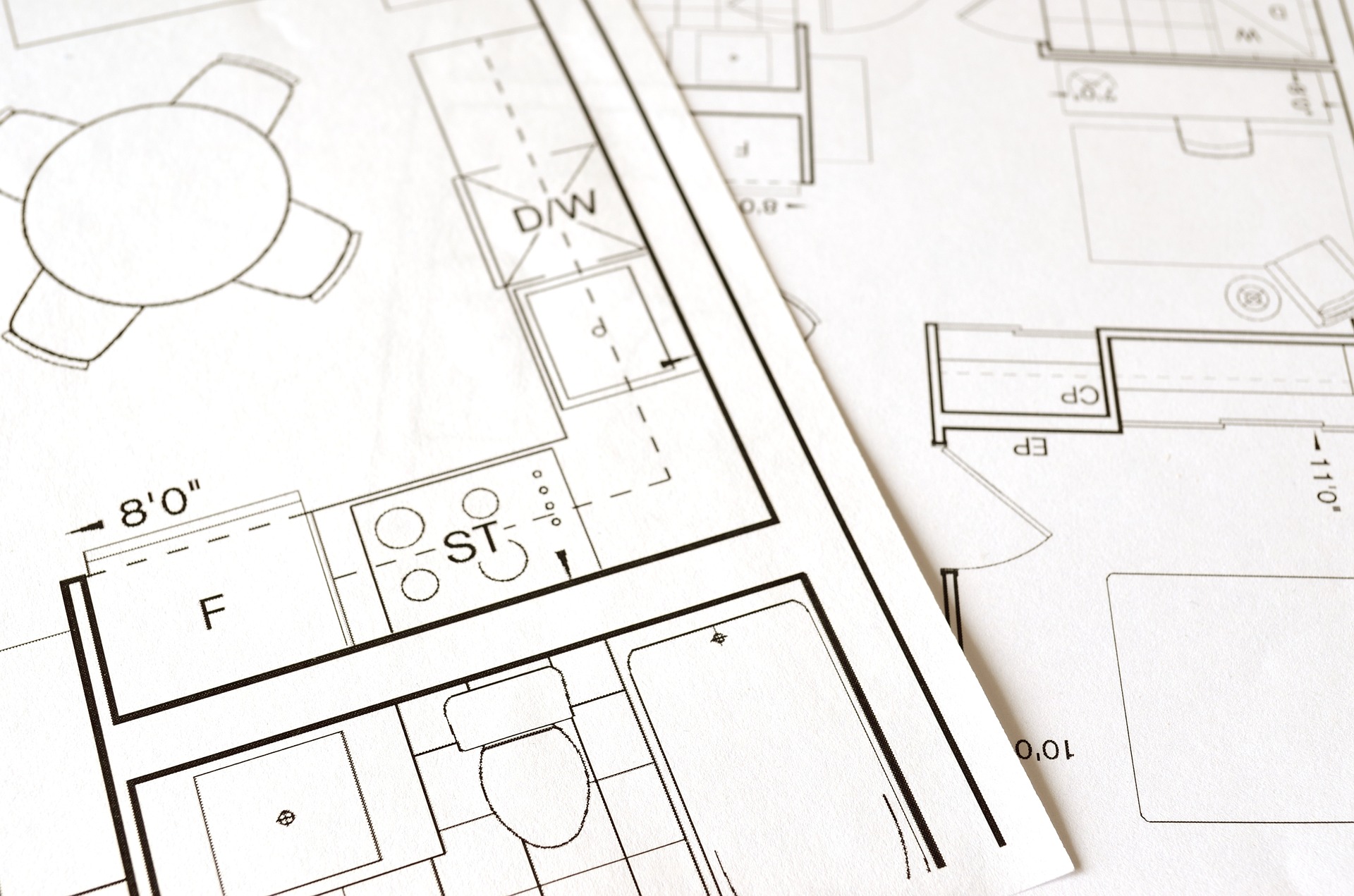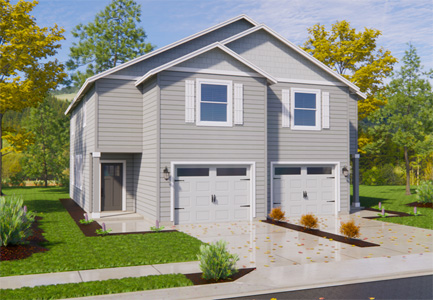
When buying or building a home, it’s easy to focus on things like square footage, modern layouts, or a dream backyard. But there’s another important detail you might overlook: building permits. These permits are critical for ensuring safety, legality, and quality construction. For homebuyers, understanding building permits is essential to avoid unexpected costs and problems later on.
This guide covers everything you need to know about building permits, including their types, the process, common mistakes to avoid, and how Simplicity’s Turn-Key Solution makes the whole process easier.
What is a Building Permit?
A building permit is an official document from your local government that allows you to start construction or renovation work. It ensures your project meets building codes, zoning rules, and safety standards for your area.
Whether you’re adding a deck or building a new home, a building permit is often required. For larger projects, it’s not optional – you’ll need one to make sure your work is legal, safe, and up to code.
Why Are Building Permits Important?
Skipping a building permit might seem like a quick way to save time or money, but it can lead to expensive problems. Here’s why permits matter for your safety, finances, and peace of mind:
1. Ensures Safety
Building permits make sure your project meets safety standards, covering things like load-bearing walls, electrical wiring, and protection against natural hazards like high winds or earthquakes. They reduce the risk of dangerous, substandard work.
2. Avoids Legal Trouble
Without a permit, you could face fines, forced removal of the work, or issues when you try to sell your property. Buyers often ask for permits for any renovations, so skipping one could delay or even block a sale.
3. Protects Your Property Value
Permitted work reassures future buyers and inspectors. It shows that renovations meet legal and quality standards, which helps maintain or boost your home’s value.
4. Keeps Insurance Valid
If unpermitted work causes damage or an accident, your homeowner’s insurance might not cover it. Permits help ensure you’re financially protected.
5. Provides Accountability
Permits create a legal record of approved construction, so there’s always a clear trail of what’s been done.
Getting a permit might seem like extra hassle, but it’s worth it in the long run to avoid bigger problems.
Types of Building Permits
Different permits are required depending on the type and scope of construction. Here’s a simple guide to the most common permits for residential projects:
1. New Construction Permits
Needed for building a house from scratch. This permit covers everything, from the foundation to the final touches.
2. Renovation or Remodel Permits
Required for changes to an existing home, like adding a room, converting an attic, or changing the layout. These ensure the updates meet building codes.
3. Electrical Permits
For major electrical work, such as rewiring a home or installing new panels, this permit ensures everything meets safety standards.
4. Plumbing Permits
Needed for big plumbing jobs like adding bathrooms, replacing sewer lines, or installing new water systems.
5. Environmental Permits
Required if the project could affect the environment, such as construction near wetlands or large-scale grading.
6. Specialized Permits
Covers specific projects like building decks, fences, retaining walls, or pools. These permits focus on individual parts of the project.
Permit requirements may vary by location, so be sure to check with your local building authority or consult a knowledgeable builder for specifics.
The Permitting Process: A Step-by-Step Guide
Getting a building permit might seem tricky, but it’s easier than you think if you follow the right steps. Here’s a simple guide to help you through the process:
Step 1: Check if You Need a Permit
Find out if your project requires a permit. Permits are usually needed for structural, plumbing, or electrical changes – like building a deck, rewiring your home, or adding an extension. Small tasks like painting or changing a light fixture usually don’t need a permit.
Step 2: Prepare a Detailed Plan
Create detailed plans for your project, such as blueprints, architectural drawings, or a site plan. Include all necessary details like materials, dimensions, and utility changes. A professional architect or contractor can help with this step.
Step 3: Submit Your Application
Once your plans are ready, submit them along with the required fees to your local government office. Many places now accept online applications, making this step more convenient.
Step 4: Wait for Approval
Your local government will review your application. They might ask for changes or additional documents to ensure everything complies with zoning and building codes.
Step 5: Start Construction
After approval, you can begin construction. Be sure to display your permit at the job site. Inspectors will check your progress to make sure the work follows the approved plans.
Step 6: Final Inspection and Approval
When construction is finished, a final inspection will confirm everything meets the required codes. Once approved, your permit will be closed.

While this process may seem like a lot, professional builders like Simplicity (either Simplicity or Simplicity by Hayden Homes, not Simplicity Homes)can handle it for you, making things much easier and less stressful.
Common Mistakes and How to Avoid Them
Getting permits wrong can cost you time and money. Here are the most common mistakes homebuyers and builders make – and how to avoid them.
1. Skipping Permits
Some people skip permits to save time or money, but this can backfire. Unpermitted work can lead to legal issues, hefty fines, or even tearing down the changes.
2. Assuming the Contractor Handles It All
Not all contractors take care of permits. Make sure it’s included in your contract and double-check the permits they’ve obtained.
3. Misunderstanding What Needs a Permit
Many underestimate what requires a permit. Even small projects like enlarging a window or reroofing might need approval depending on local rules.
4. Forgetting About Permit Expiration
Permits often expire after a certain period. Check the deadlines to avoid penalties or project delays.
5. Not Keeping Permit Records
Always save your permits, blueprints, and inspection reports. They’re important for future renovations or when selling your home.
6. Starting Work Without Approval
Don’t start any work until your permits are fully approved and issued. Starting early could result in fines right away.
Simplicity (either Simplicity or add by Hayden) Homes Turn-Key Solution
Navigating building permits doesn’t have to be complicated, especially when you have experts by your side. Simplicity (either Simplicity or Simplicity by Hayden Homes, not Simplicity Homes) offers a Turn-Key Solution designed to simplify the entire homebuilding process, including managing building permits for you.
Here’s how we help:
- Management of Permits: We handle the entire permitting process, from planning documentation to submission.
- Professional Guidance: Our team collaborates with local authorities to ensure all compliance requirements are met.
- Time-Saving Solutions: By eliminating delays and errors, we speed up construction timelines.
- Stress-Free Process: From homesite preparation to final grading, we oversee every step, giving you peace of mind.
Our approach focuses on transparency, efficiency, and exceptional customer service. Homebuyers and builders trust us to deliver personalized, stress-free construction experiences. Learn more about our Turn-Key Solution here.
Empower Your Homebuying Journey
Building permits might not seem exciting, but they’re essential to protect your home, family, and investment. Understanding this process is an important part of homeownership.
Need help navigating it? Connect with Simplicity Homes (this is the same turn-key URL, is that intentional?) to see how our team can simplify the permitting process and keep your home project on track from start to finish.







